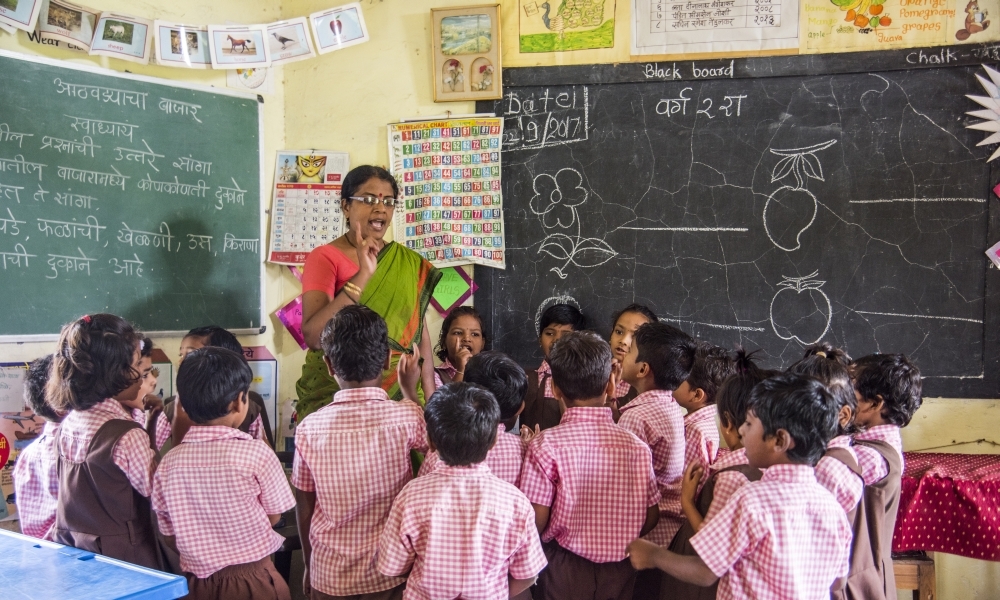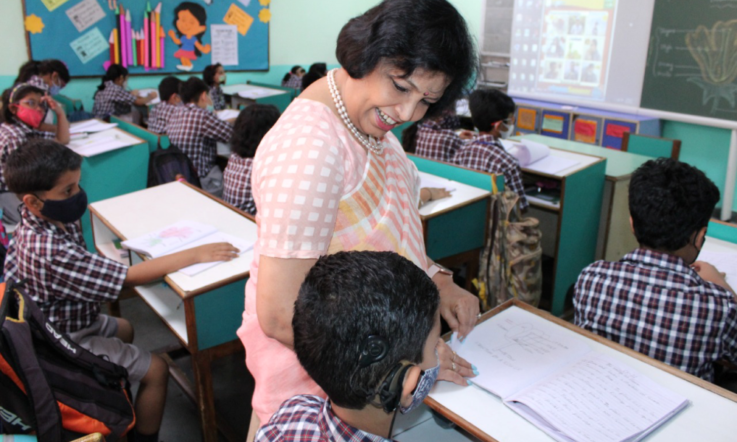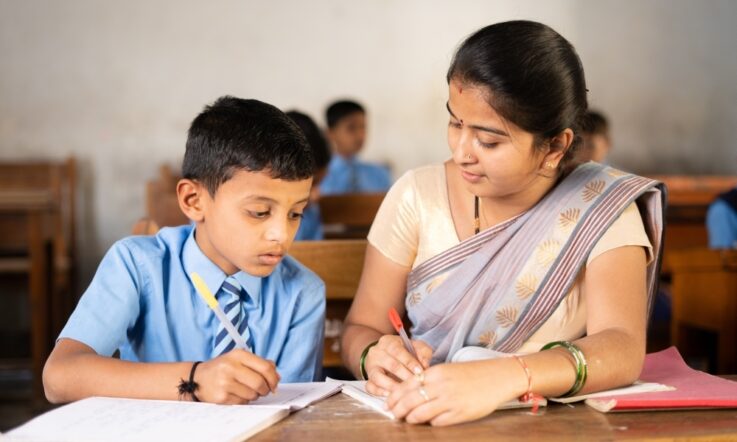Disruptive behaviour in the classroom makes it difficult for the teacher to teach and for other students to learn.
Dr Umesh Sharma is a Professor (Education) and Associate Dean (Equity and Inclusion) at Monash University in Australia. He has led research in disability and inclusive education across several countries, including India, Bangladesh, Canada, the United States, and Pacific Island nations such as Fiji, the Solomon Islands, Australia and New Zealand.
Why do children misbehave?
Dr Sharma says revisiting a scene from the 2007 movie Taare Zameen Par, can help answer this question. In the film, the teacher asks the student to read but he is unable to do so – the teacher insists the student makes another attempt. The student starts making funny noises that infuriate the teacher and she decides to send the child out of the classroom.
‘Disruptive behaviour is an indicator of students wanting to escape the learning environment or from a given task which is too difficult or to draw attention. In the above instance, the student was misbehaving as he could not participate in the task given to him,’ Dr Sharma tells Teacher.
He adds that most teachers, almost all the time, pay extra attention when children misbehave. They may leave their tasks to tackle the behaviour or ask the child to stop misbehaving. He says this does more harm than good, as children continue to misbehave to draw the teacher’s attention.
‘Give attention to students when they behave properly, rather than when they misbehave,’ he advises. ‘For example, they [teachers] can find another student who's sitting next to the student who's misbehaving, and say I really like the way you're doing your work.’
He emphasises that teachers also need to contact parents when students are behaving well, rather than just when they misbehave. Parents will then understand that the teacher is concerned about the child. ‘The problem is when you only get a phone call once in a year [when the child misbehaves].’
Dr Sharma shares 5 key principles teachers can follow to prevent challenging behaviour in their classroom.
Principle 1: Set clear expectations
‘Clear expectations is the really important one. Think about as you start your day … you need a very clear expectation of what students are supposed to do as soon as they walk in the classroom. If students don't know what they're supposed to do, they will do something that will annoy the teacher,’ says Dr Sharma.
He says good teachers, or good schools, spend one or 2 weeks at the beginning of the academic session to set behavioural expectations.
‘They [teachers] say “OK when you come into the classroom, you need to put your bag here, get your pencils out, get your notebooks out, come and sit on the chair, and put everything away”. And then they start reinforcing good behaviour.’
This can include role-playing to show students what they should do, or what they may be doing wrong. Dr Sharma adds it is important to reward students when they follow expectations, and be consistent.
Principle 2: Motivate and engage students
Teachers need to understand the interests of their students while designing their lessons.
Dr Sharma says, ‘Teachers will say “maybe 80% of students in my class understand cricket, but there are 20% of kids that don't really understand what cricket is all about”. So, they still need to think about that 20% when they are creating classroom activities.
‘It means teachers need to talk to those students and learn more about them. Get to know what they do over the weekend, what do they with their friends, their peers…that's almost like a resource package for you to create an engaging classroom.’
Principle 3: Help students develop belongingness
‘I think the need to belong is extremely important nowadays, if you think about the last 3 or 4 years,’ Dr Sharma says. Most students stayed at home, away from teachers and friends during the COVID-19 school closures. Now that they are back in school, some students have formed their own groups, but there are some students who don’t belong, who are left alone and disengaged.
‘And these are the students that can misbehave in two ways. They could be either very shy, quiet, don't want to talk to anyone or they could display externalising behaviour…very aggressive,’ says Dr Sharma.
He highlighted that schools need to know what is going on in the lives of students. Only, then can they prevent disruptive behaviour. School leaders can appoint teachers or anyone who can create a safe space where students share their personal and academic concerns.
‘When students see that I have at least one person in this school or in this class [who they know, and with whom they can share their concerns], they feel so much better,’ adds Sharma. This strategy has proved to be effective even in preventing suicide and self-harming behaviour.
Principle 4: Give students a choice
Dr Sharma pointed out that students should have a choice in their learning, in 3 ways: input, process and output – how teachers provide information, how students learn about the content, and how teachers know whether students have learnt the content.
Teachers should think about various ways of tailoring these processes for different students. For example, in the area of assessments, he says, ‘If teachers do not provide any alternative way [other than worksheets] to do a task, soon those who do not like doing worksheets, will misbehave.
‘But if you say “oh well, you can do a PowerPoint presentation or you can do a drama, or you can draw your answers” – when students know you have more choices, there'll be less behaviour problems.
‘So, think about what you can do in your classroom to give more choices to your students.’
Principle 5: Form strong relationships with your students
Dr Sharma cites a Ted Talk by Rita Pierson, who says ‘kids don’t learn from people they don’t like’.
‘It is easier for us to form relationships with those students that we really like, who are performing well,’ Dr Sharma says ‘… it’s the students who are not learning in your classroom, those who are misbehaving all the time, that’s here your relationship breaks down. That’s a task I say all teachers need to do – they need to find a way to build a relationship with those students. Once they start liking you, you'll be amazed [at] how much they can do.’
Dr Umesh Sharma says the most important principle is setting clear expectations, and the best time to do this in the first weeks of the school year. Thinking about your own context:
Is this something you spend time doing with your own students?
Do they know what is expected of them when they enter the classroom?
Do you explicitly teach these expectations by modelling what good behaviour looks like, or when students do something that doesn’t meet agreed expectations?



